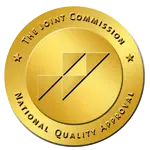People diagnosed with substance use disorder (SUD) and co-occurring mental health issues often struggle to manage everyday stress. Treatment programs offer a wide range of services and therapeutic tools, including biofeedback and psychotherapy. Neurofeedback is especially useful in treating young adults with SUD and trauma-related mental health issues. According to Applied Psychophysiology and Biofeedback, “Neurofeedback may be among the most promising biofeedback modalities for the treatment of adolescents with addictive disorders because of the neuroplasticity potential of the adolescent brain.” Pathways Recovery Center encourages using biofeedback to reduce stress and improve the effectiveness of treatment for adults and young adults.
Biofeedback is a form of therapy. Various instruments are used to track changes in heart rate, muscle tension, temperature, brain waves, and other physiological signals. The signals are displayed using audio/visual devices. During sessions, people in recovery learn to control their body’s responses using relaxation techniques, mindfulness, and other coping skills. The audio/visual devices allow clients to see the changes to their physiology in real-time. Using biofeedback helps clients gain greater control over their physical and emotional reactions.
People in recovery may have difficulty maintaining emotional stability or managing stress responses in everyday situations. Using biofeedback trains the brain and body to respond appropriately to situations and thoughts people find distressing or overwhelming. Achieving better control and learning to identify the connections between thoughts, feelings, sensations, and behaviors reduces the risk of relapse and improves mental health.
Multiple forms of biofeedback are often used to treat people in recovery. Some of the most common types of biofeedback include:
EEG measures brainwaves, an EMG measures muscle tension, and thermal feedback monitors skin temperature. Used together, they provide a comprehensive image of how the body reacts to various internal and external stimuli. According to Biofeedback by Kashif Malik and Anterpreet Dua, “Biofeedback is a technique to augment the normal sensory feedback and allow better control of body functions that are usually considered involuntary. The general mechanism starts by measuring a body parameter, either physiologic or biomechanical, which then gets transformed into a visual, auditory, or haptic signal.” People in recovery learn to manage their reactions by controlling their body’s reactions using technology and an audio/visual interface.
Biofeedback is used to treat multiple conditions and symptoms. People in recovery use the techniques learned in biofeedback sessions to manage chronic pain, lower stress, and decrease the symptoms of SUD or co-occurring mental health disorders. The therapy works by creating a deeper and more conscious mind-body connection. Each session allows individuals in treatment to gain better control over their mental and physical reactions, making it easier to direct thoughts, feelings, and behaviors.
Biofeedback improves mental health by doing the following:
Mental and physical health are directly linked. Being able to control physiological responses makes it easier to manage emotional stressors.
The instruments and software used to track signals within the body help people better understand their internal reactions to emotional situations. According to Nursing Research and Practice, “Through biofeedback equipment, the individual can become aware of his or her physiological function so that he or she can learn to modify thoughts, feelings, or behaviors in order to make positive changes to that physiological function.” In addition, the study indicated, “Biofeedback training has been helpful in reducing symptoms of stress, anxiety, depression, and other health conditions.”
Gaining better control over emotional and behavioral responses reduces stress. Instead of struggling to manage symptoms, biofeedback makes managing everyday interactions and situations easier. People in recovery can retrain their focus and energy on healing and moving forward with their lives.
Biofeedback is a quick and easy way to increase mindfulness and gain greater self-awareness. Some additional benefits of biofeedback include the following:
People in recovery use mindfulness and relaxation techniques to cope with everyday symptoms and achieve emotional stability. Biofeedback is an excellent tool for practicing these exercises. The real-time monitoring of physiological reactions makes it easier for clients in treatment to make progress in learning meditative, mindfulness, or relaxation techniques.
Biofeedback is a valuable tool for individuals struggling with SUD and co-occurring anxiety or trauma-related issues. However, biofeedback does not cure anxiety, trauma, or SUD. Instead, biofeedback should be used alongside other evidence-based and holistic treatments to provide better outcomes for people in recovery. Rehabilitation and mental health program utilize biofeedback alongside psychotherapy, peer support, life skills development, nutritional coaching, and other essential services. Pathways Recovery Center collaborates with clients to ensure the programs help them meet recovery goals.
Biofeedback is an established therapy used to help people manage chronic stress, mental health disorders, and SUD. Clinicians use software and instruments to track physiological changes in the body. Clients learn how to control their body’s reactions to stress and other triggers, improving mental health and reducing the risk of relapse. Multiple types of biofeedback therapy are used alongside more traditional treatments, including psychotherapy. Pathways Recovery Center provides personalized and integrative therapies to help clients heal from substance misuse and mental health disorders. Biofeedback is one tool used to address the effects of trauma, stress, and other underlying issues. To learn more about our programs and treatment services, call us today at (888) 771-0966.








